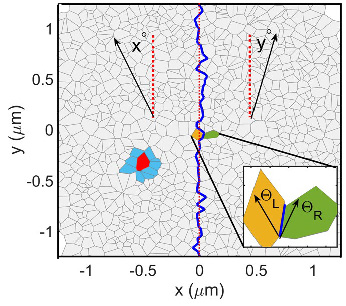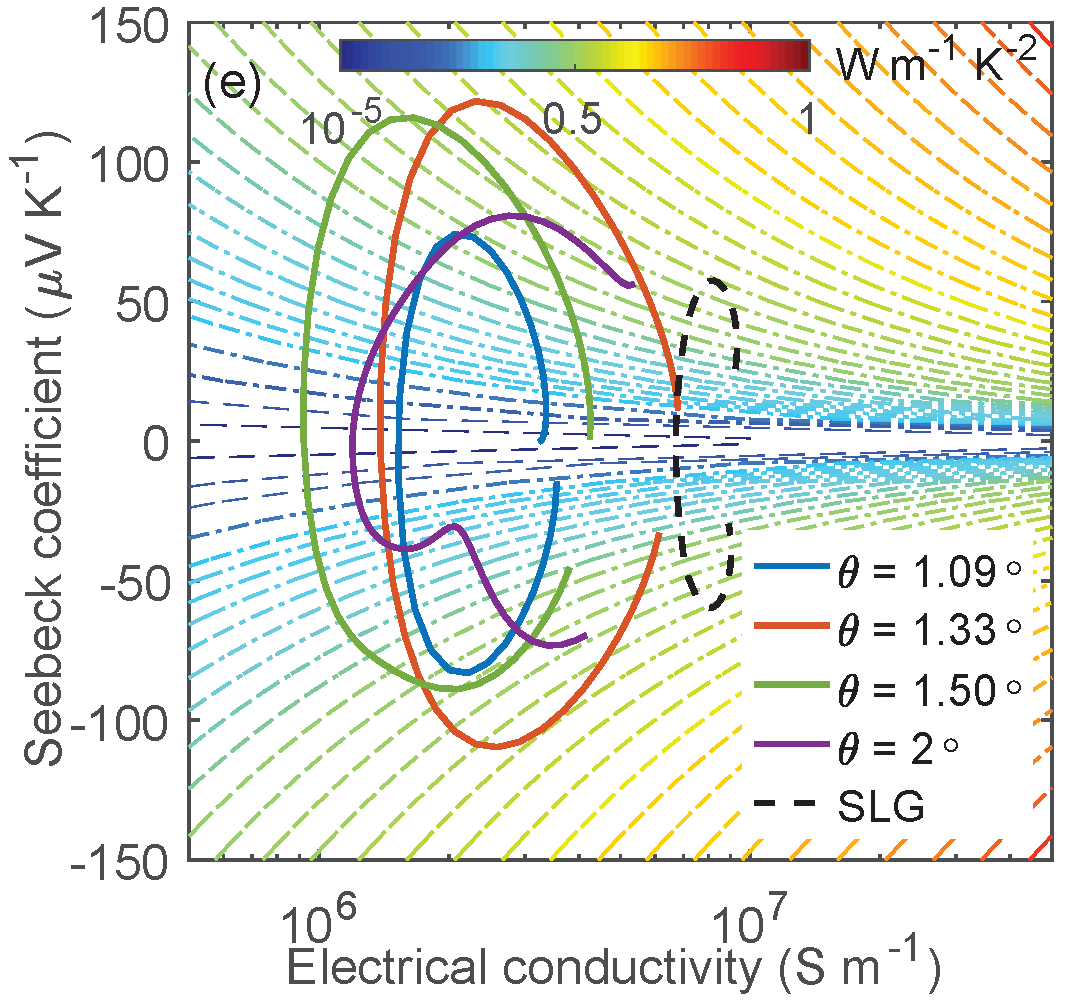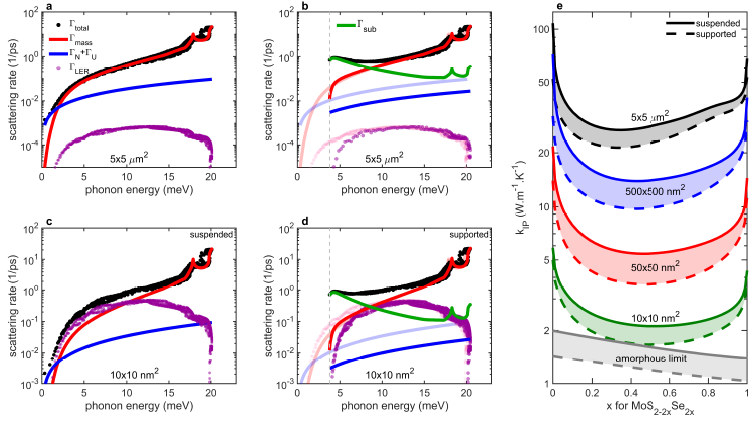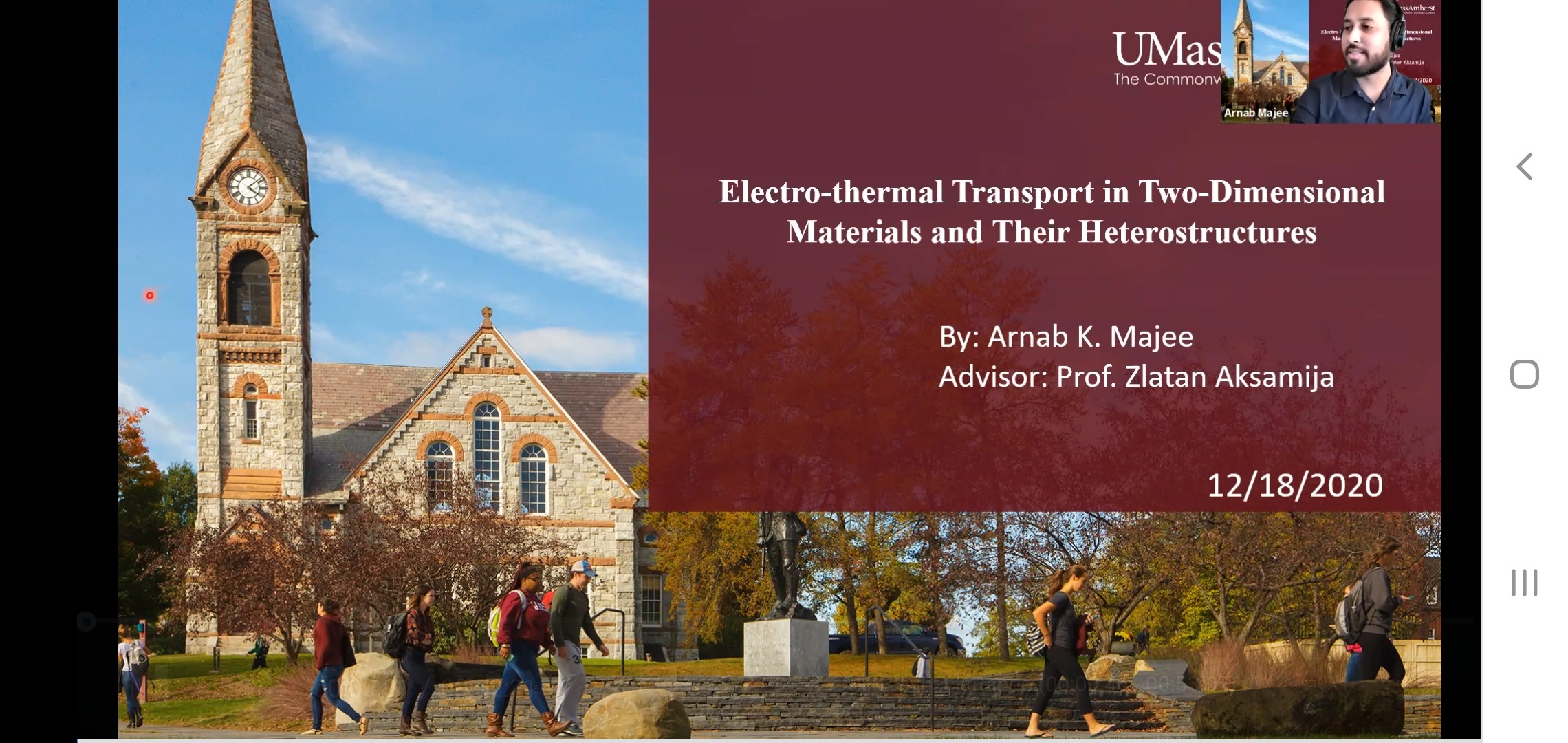Prof. Aksamija has been selected to receive a research grant from the National Science Foundation, as part of the Computational and Data-Enabled Science and Engineering (CDS&E) program. This 3-year award will support research in coupled transport of electrons and phonons in 2D materials. More information is available from the NSF here: https://www.nsf.gov/awardsearch/showAward?AWD_ID=2302879&HistoricalAwards=false
Cameron defends his dissertation
NElab PhD student Cameron Foss defended his dissertation today. It was titled “Thermal Transport Across 2D/3D van der Waals Interfaces”. Congratulations, Dr. Foss! #phd #transport #thermal #phonon #phdone

MItigating coulomb interactions improves transport in doped polymers
in collaboration with the ALIEN group at UMass Amherst, we show that adding nanoparticles with large dielectric constant can help mitigate enegetic disorder caused by carrier-dopant interactions and lead to large improvements in electrical conductivity of doped conjugated polymers. This work was recently published in Advanced Science: https://doi.org/10.1002/advs.202101087

Graphene twists for thermoelectrics
Adithya’s newest paper in the journal 2D Materials title “Very High Thermoelectric Power Factor Near Magic Angle in Twisted Bilayer Graphene” demonstrates large and twist-angle tuneable thermoelectric power factor in twisted bilayers of graphene. Now available online https://doi.org/10.1088/2053-1583/ac161d

Cameron’s work on thermal boundary conductance published in Nanotechnology
Cameron’s research on the thermal boundary conductance between 2D materials beyond graphene and 3D substrates, including amorphous SiO2 and crystalline GaN, has been published in a special issue of Nanotechnology: “Focus on 2D Materials for Microelectronic Devices and Nanoscale Heat Dissipation” https://iopscience.iop.org/article/10.1088/1361-6528/ac0d7d

Arnab’s work on graphene accepted in Nano Express
Arnab’s last PhD article on transport across extended grain boundaries in graphene is accepted in Nano Express. Here is a link to the article: https://lnkd.in/ex3B93X.
A large mismatch in the crystal orientations of adjacent grains in polycrystalline graphene could lead to large electrical resistivity across such GBs. However, in this work we show that due to the meandering nature of a GB, a few “special” regions of the GB provide conductive paths for the charge carriers to flow across them. We simulated 5000 identical GBs (i.e. GBs with the same roughness and correlation lengths) to report statistical mean and standard deviation of resistivities across GBs of varying length. Our results show that shorter GBs exhibit larger variation in resistivities as compared to the longer ones.

Adithya defends his dissertation. Congratulations Dr. Kommini!
Adithya defended his dissertation titled “TOWARDS HIGHER POWER FACTOR IN SEMICONDUCTOR THERMOELECTRICS: BANDSTRUCTURE ENGINEERING AND POTENTIAL BARRIERS,” which has led to a number of discoveries and papers, including our recent work on “Very high thermoelectric power factor near magic angle in twisted bilayer graphene,” now on arXiv: http://arxiv.org/3668520

Meenakshi defends her dissertation. Congratulations Dr. Upadhyaya!
The second PhD candidate from NETlab defended their dissertation. Congratulation Dr. Meenakshi Upadhyaya!!!!. Her research is on thermoelectric properties of silicon alloys, nanocomposites, and organic materials (conjugated polymers).

Arnab defends his dissertation. Congratulations Dr. Majee!
Cameron’s work on thermal transport in 2D alloys published in Phys. Rev. Materials

Cameron’s paper on TMDC alloys has been accepted for publication in Physical Review Materials: https://journals.aps.org/prmaterials/accepted/4c079Z8aJa21100671896c71f46bf87e085ebf28f

